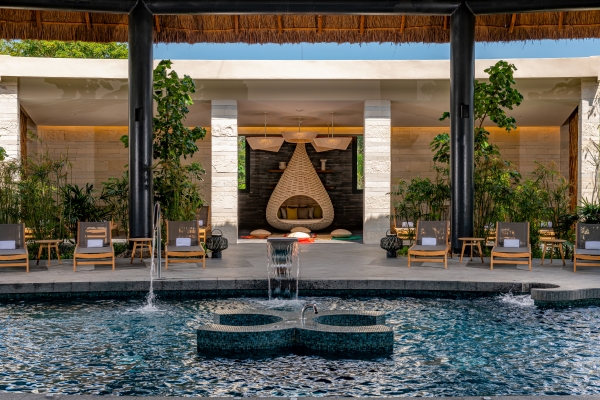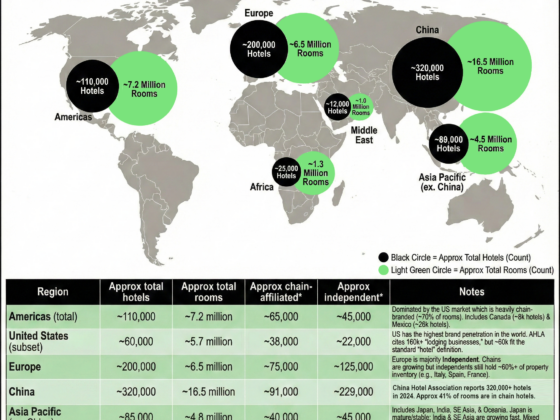Let’s be honest: Back in the day, vacations typically conjured images of pure gluttony, where exercise was avoided at all costs and carbs ruled the plate. And though letting yourself go while away from home can be deserving if not rewarding, more and more travelers are opting to go the other way and take better care of themselves while on vacation. So says Hilton, which highlighted a series of wellness trends in its “2025 Trends Report.” These included everything from getting better rest and promoting recovery to “communal wellness” and even methods to extend life. Wouldn’t that be nice.
HOTELS spoke to Jessica Shea, VP of wellness, retail & leisure operations, Americas at Hilton, to get the lowdown on how wellness is woven into the travel fabric and how hotel guests are taking advantage of programming that seeks to maximize and enhance the wellness experience.
HOTELS: The U.S. has one of the highest obesity rates in the world, among other national health concerns. In this context, why should the hotel industry prioritize wellness?
Shea: There are many systemic issues behind national health concerns. Coming out of the pandemic, many realized that there are lifestyle changes and habits that can be made on a regular basis that definitely impact health in a positive way and that this reliance on the medical system, as it has historically been constructed, may not be the silver bullet to healthier, longer lives. Hotels play a role in helping guests maintain these habits while traveling. At Hilton, we see it as both an economic opportunity and a responsibility—whether someone is staying at a Hampton Inn or a Waldorf Astoria, we make sure that we are delivering experiences, opportunities and options for people to maintain those lifestyles on the road. In the past, vacations or business travel meant throwing all healthy habits out the window. Travelers today are more focused on sustaining their healthy routines rather than abandoning them while away.
HOTELS: Are travelers really choosing hotels based on wellness offerings?
Shea: Absolutely. I hear from people who choose hotels based on their fitness centers. Wellness is no longer a niche trend; it’s an expectation. We’re creating a framework across our 25 global brands to make wellness accessible at every level.

HOTELS: Sleep is a huge part of wellness. How is Hilton improving the sleep experience?
Shea: We’ve partnered with Harvard sleep expert Dr. Rebecca Robbins to optimize sleep experiences by developing bedding programs and integrating sleep-friendly design in new hotel prototypes—better soundproofing, optimized lighting and HVAC controls. We’re also hosting sleep retreats where Dr. Robbins educates guests on circadian rhythms, what you should eat and not eat close to bedtime, when you should move, when you should get sunlight, etc. Training also plays a role; something as simple as staff awareness about noise levels can make a difference.
HOTELS: What about wearables? Are you incorporating them into the hotel wellness experience?
Shea: We look at ways that we can help action the wearable data since it leads to medical information. A lot of it is about stress reduction. When you see the data that the wearables put out, it’s how do you reduce that anxiety, that constant stress level, all those elevated cortisol levels throughout a person’s day so that they are able to sleep at night. Bringing that into the hotel experience is our role, our job.
HOTELS: How does the wellness approach change within each Hilton brand? How do you tailor or make programs available to someone staying at a Spark or a Hampton versus a Conrad or a Waldorf Astoria?
Shea: It varies by segment. Focused-service hotels prioritize a built environment conducive to rest—think dark-out shades, quiet rooms and optimal temperature control. At luxury properties, like Conrad or Waldorf Astoria, we enhance wellness through premium spas, sleep treatments, fitness offerings and stress-reducing amenities, such as cold plunges and infrared saunas. The key is making wellness scalable and meaningful at every price point. Regarding fitness, we have fitness centers in all our hotels. At a Waldorf Astoria, it is going to look a lot fancier, but that doesn’t mean the fitness center of a Hampton Inn will be the size of a shoebox.

HOTELS: What about nutrition? How does a traveler make nutrition choices at a Spark versus a Waldorf Astoria?
Shea: Our grab-and-go markets now feature wellness-focused items like Athletic Greens and clean-label snacks. We’re looking at differentiating the assortment in those spaces to add healthier food-and-beverage items and ensure guests can maintain their dietary habits without compromising on taste or convenience.
HOTELS: Is wellness a revenue driver for Hilton?
Shea: Definitely. Data show that strong wellness offerings can impact average daily rate and drive demand, especially in lifestyle and luxury segments. Spas, for example, generate significant non-room revenue and ancillary revenue.
HOTELS: How about the retail component? Do you partner with wellness brands?
Shea: We have focused on creating these kinds of partnerships to expand into wellness retail. You can find brands like Lululemon in our hotels and Alo in all our 40 managed spas across America. We’re also working on broader retail partnerships that we’ll announce soon.

HOTELS: Would Hilton consider collaborations or capsule collections with wellness brands?
Shea: We have a partnership with Peloton and we just launched a partnership with Calm, [the meditation and sleep app], which we’re really excited about. You’ll be seeing more of that extend into retail. Right now, we’re focusing on our core programs, but knowing that that is going to lead to more pop-up capsule collections and a focus on lifestyle and luxury and resorts, specifically.
HOTELS: How do wellness initiatives tie in with Hilton Honors?
Shea: We’re working on integrating Hilton Honors members with our wellness offerings a bit more. We have various on-property offers, but we’re working closely with the Honors team to see how we can bring wellness to life even more.



